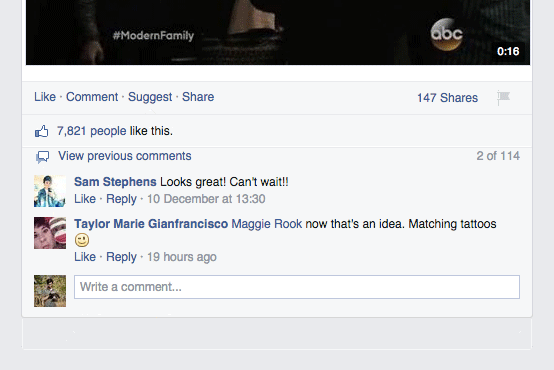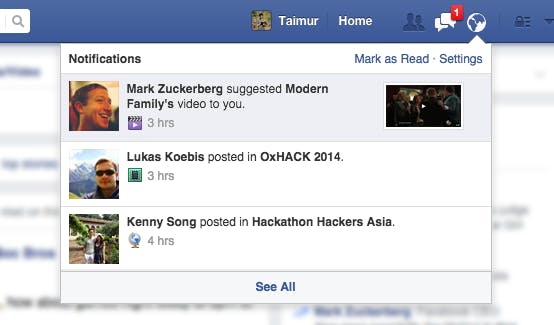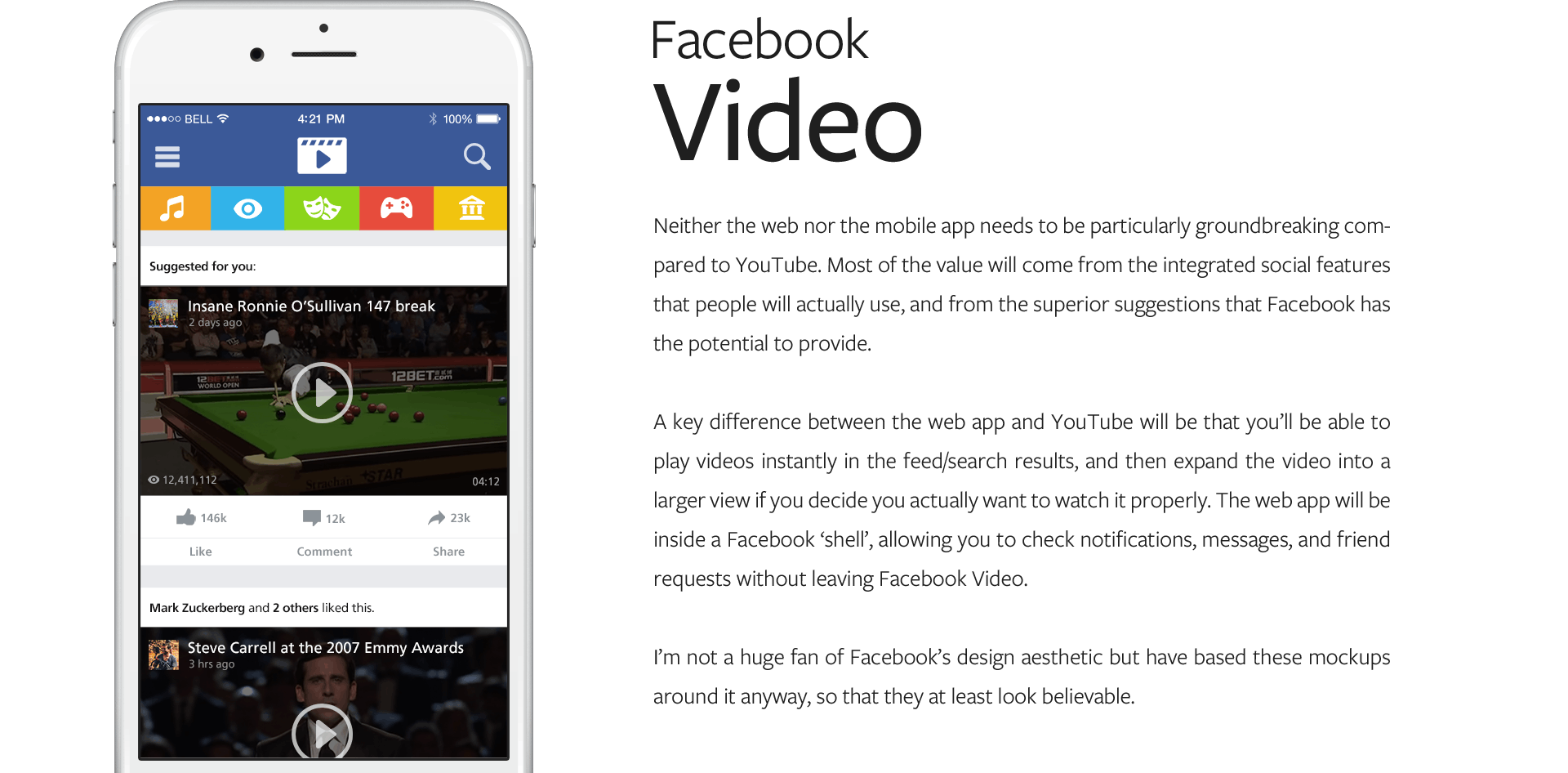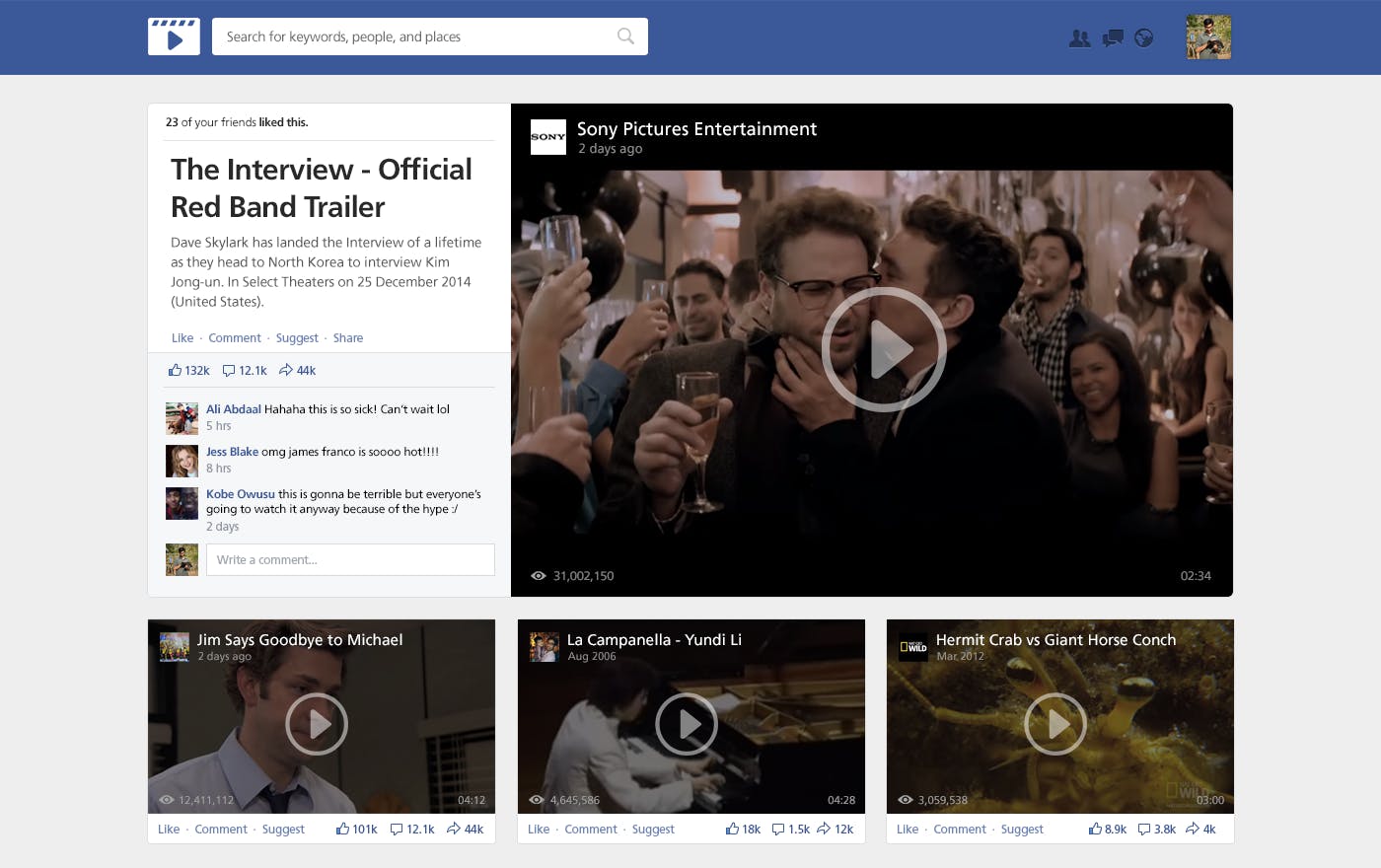Video on Facebook is a humble feature with humble beginnings. Started at a Facebook hackathon circa 2008, video on Facebook stayed much the same for a long while but has now started to receive a little love. Over the past year I’ve seen more and more “native” videos pop up on my feed (as opposed to embedded YouTube videos, for example), and you probably have too. What’s interesting is that most of the videos on my feed (and yours too, I’m guessing) are actually shamelessly stolen from Vine, YouTube, LiveLeak, etc. and re-hosted on Facebook so that they become “native” videos.
Thus, the people have spoken—clicking on links to external videos, and even playing embedded YouTube videos in the News Feed, is an arduous task that none of us deserve to go through. What humanity is asking for, are native videos that autoplay as we scroll through the News Feed, right?
Not quite, I say.
What the people truly want is a social video platform done right.
Videos are a social thing
Allow me to set the scene for a moment: You’re hanging out with your friends, it’s a few hours into the evening, and there’s a palpable lull in the conversation. Suddenly someone sits up and says “Hey! Let me show you this funny video I saw the other day.” And so it begins—the next 30–40 minutes are spent huddled around a laptop watching YouTube videos. “I swear that was funnier the first time I saw it,” you think to yourself as your video ends anticlimactically.
People want videos to be a social experience.
Many relationships are built on the foundation of sharing funny videos with one-another—when we watch something funny, we immediately think “Haha omg, X is gonna love this!” and we then send X a link to the video. We see this phenomenon in action on Facebook videos too—every comment consists of people tagging their friends, so that they get a notification with a link to the video (Exhibit A, below.)
People want videos to be a social experience. This is something Google understood when they pushed for YouTube to be fully (and forcibly) integrated with Google+, but what they probably realized is that Facebook is perhaps the only company in the world right now that’s in a position to do social video right. I just scrolled through my News Feed and the first video, the eighth post down, had 700,000 views, 6,000 comments, and 13,000 shares, and it was posted two hours ago.
By virtue of being the only social network that practically everyone uses, I think Facebook are in a unique position to create a video platform that makes full use of the social nature of video-watching.
Introducing: Facebook Video
In this section, I offer my entirely unsolicited opinions about what Facebook should do with video.
Problem 1: video sharing
More often than not, people want to share videos (and most other content) with just a couple of friends rather than their entire friend list. Facebook doesn’t make this very easy, so the popular makeshift solution is to tag friends in comments on videos so that they get a notification from which they can access the video. This bears a striking resemblance to the original method of retweeting on Twitter, which was informally going on among users before Twitter noticed and made it an actual thing.
Sharing posts on Facebook is, by default, a very public experience, and I believe it should be a more private one. The current method of sharing a post (video or otherwise) with a small group of friends is as follows:
- Click ‘Share’ underneath the post.
- Wait 1–2 seconds for a dialog box to appear.
- Change the method from ‘On your own timeline’ to ‘In a private message’ or ‘On a friend’s timeline’ via a drop-down box.
- Enter names of friends with whom you want to share the post.
- Click ‘Share Link’.
It’s pretty clear why people prefer tagging friends in comments.
What I’d like to propose is a more private sharing experience. I think this should either become the default functionality of the Share button, or become its own button entirely, called, say, “Suggest.” Here’s how I think it should work:
This will leave the comments sections of videos (and other posts) to be used as they were intended—for intellectual debate and civil discussion, much like on YouTube.
Problem 2: video discovery
Another key feature for the world’s social video platform is a way to discover new videos. At this point you might be thinking “But Facebook is a social network! Why should they help people discover videos?” But when you think about it, content discovery—removing barriers between content and the people who want to consume it—actually aligns perfectly with Facebook’s mission of “making the world more open and connected.”
The company has a huge amount of data on what people are currently watching and enjoying, but there’s no way for me to discover cool stuff outside of my social circles.
I think Facebook’s already pretty good at helping people discover videos. Most of the videos that come up on my News Feed are (allegedly) due to the fact that at least one of my friends has already “liked” it, and most of the time I do end up enjoying the video. They also have a handy “Similar Videos” section that often sets me on a time-consuming path ending only with regret. My proposed Suggest feature would help with discovery too, and by analyzing the patterns in who’s suggesting posts to whom, Facebook can better train its algorithms to make the News Feed more relevant.
That’s all well and good, but here’s where I think the true untapped potential in Facebook’s strategy is: The company has a huge amount of data on what people are currently watching and enjoying, but there’s no way for me to discover cool stuff outside of my social circles. So here’s my suggestion: Facebook should start using the enormous amount of data that it has about how people consume content to create a suggestion engine of sorts. It’s probably difficult for a computer to figure out why I enjoyed a particular video and then find videos with the same characteristics, right? But using Machine Learning™ and Big Data™, Facebook can instead find patterns between my tastes and the tastes of a billion other people (which would be much easier than finding patterns in the videos themselves), and then suggest videos that people with similar tastes to me are currently enjoying.
Facebook would become extremely cluttered if all these suggested videos were flooding into peoples’ News Feeds though, so I propose that this be introduced as a standalone product. I present, Facebook Video:
A lot of what I’ve said in this post can apply equally well to pretty much every type of content posted on Facebook, but I think video is particularly unique and would be a good starting point for Facebook to branch out into content discovery.
Update: Facebook has a acquired QuickFire Networks, a company that built a custom hardware and software platform for reducing video file sizes and upload times. [Also,] this post was in the works for over a month, in which time it seems many, many people have caught on to the fact that Facebook Video is going places, so my thoughts and insights will, no doubt, sound much less profound than they actually were.
This piece was originally featured on Medium, and reposted with permission. You can follow its author on Twitter, @TaimurAbdaal, and learn more about him here.
Photo by John Loo/Flickr (CC BY 2.0)







